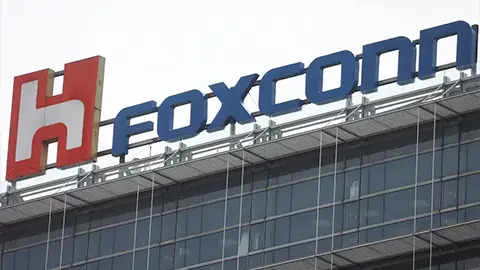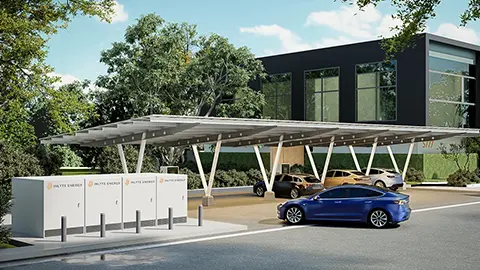Hybrid Pioneer Develops New EV Batteries
In past years, Toyota has garnered praise and criticism for its approach to electric vehicles. On the one hand, the company was one of the original hybrid innovators, and has put millions of Priuses, Camry Hybrids, Highlander hybrids, and other electrified cars on the road – saving millions of gallons of fuel and reducing emissions. On the other hand, Toyota has been slow to embrace fully electric vehicles, often pushing back at legislation mandating EVs and saying it prefers to offer a portfolio of different options. But while Toyota’s approach to offering a broad range of electrified options hasn’t changed, it is making huge strides in battery technology that will form the foundation of a new generation of Toyota EVs, coming very soon.
Indeed, after years of resisting battery electric vehicles, Toyota is hard at work on four separate types of next-generation batteries, three of them with liquid electrolytes, and a fourth using solid-state technology. By 2030, the company expects that these next-generation batteries will power half of the 3.5 million new Toyota electric cars it will sell annually. The new batteries’ performance and range, detailed here, should be appealing to a new group of potential owners that have resisted electric cars until now.
High-Performance Lithium Ion: 497 Miles of Range
The first of the new Toyota batteries is the most conventional, and uses lithium-ion chemistry. Due in 2026, Toyota says that its new high-performance lithium-ion battery will increase driving range for new Toyota EVs to 497 miles. The company claims that, on an appropriate Level 3 fast charger, it will be able to go from 10 to 80 percent charge in 20 minutes or less – a substantial improvement over current batteries. The new battery is also said to be more economical to produce.
Toyota’s bZ4X crossover is currently its only pure electric vehicle, and while it offers a great package and solid build, it isn’t class-leading in any aspect of electric car performance. In addition to the new high-performance battery, the next-generation crossover will be substantially lighter and more aerodynamic, further improving performance.

Lithium Iron Phosphate With 20 Percent More Range
Coming in 2026 or 2027, Toyota is also working on a new lithium iron phosphate (LFP) battery, which it is calling its “popularization battery.” Popularization refers to this battery’s lower cost – it is constructed using technology that Toyota actually pioneered for its nickel-metal-hydride batteries, used in the original Prius.
Not only will the new LFP “popularization” battery offer up to 20 percent more range in vehicles like the bZ4X, but it will also be substantially less expensive to make, reducing vehicle prices and making EVs more accessible to more drivers. In fact, Toyota estimates the battery will be 40 percent cheaper to produce. Charging time isn’t quite as fast as the lithium-ion performance battery, but 30 minutes from 10 to 80 percent on an appropriate Level 3 charger should meet most drivers’ needs.

Liquid Electrolyte Li-Ion For 621 Miles of Range
While still using lithium-ion chemistry, Toyota’s next-generation high-performance battery will switch to a high-nickel cathode to achieve significantly more range – up to 621 miles, the company claims, especially in next-generation vehicles with lower weight and improved aerodynamics.
The use of a high-nickel cathode not only improves range – it should also be more efficient to make. Toyota says that production costs are estimated to be about 10 percent lower than the high-performance battery it will succeed, with similar charging times on Level 3 chargers of 20 minutes or less from 10 to 80 percent. Expect this battery to debut in 2027 or 2028.
Solid-State Toyota Battery in 2027
Also on tap for 2027-2028 is an all-new solid-state battery. Long promoted by many companies as the next big leap in battery technology, solid state batteries can charge and discharge substantially faster, and their solid electrolyte makes them more energy-dense, meaning they can pack more range and power in a similar-sized battery – or reduce the size and weight of the battery for improved packaging and efficiency.
Until now, the trade-off for solid-state batteries’ greater energy density and higher performance and efficiency has been shorter battery life. But Toyota claims it has solved that problem, with innovations in materials and technology advancing their timeline to market. Indeed, the company expects to be selling EVs with solid state batteries by 2027-2028, offering 62 miles of range and a fast-charging times of 10 minutes from 10 to 80 percent. At that speed, EV charging begins to approach parity with gasoline cars for convenience.
And that’s just the beginning. Toyota says it is already working on an even better lithium-ion solid-state battery that will increase range by 50 percent compared to the “performance” battery – targeting 745 miles of range, better than almost any gasoline-powered car can deliver.

Better Batteries Make for Better Aero
Improvements in battery technology have positive effects for the overall efficiency and performance of the vehicles they are installed in. Better battery tech will allow automakers to package batteries into smaller spaces, reducing their height and size, and therefore improving aerodynamics and range.
For example, Toyota, which packages batteries in the floor of its vehicles, says that new tech will allow it to reduce the height of a battery pack from around 6 inches to 4.72 inches – and the high-performance solid-state battery would be less than four inches tall.
All mileage is EPA-estimated.















